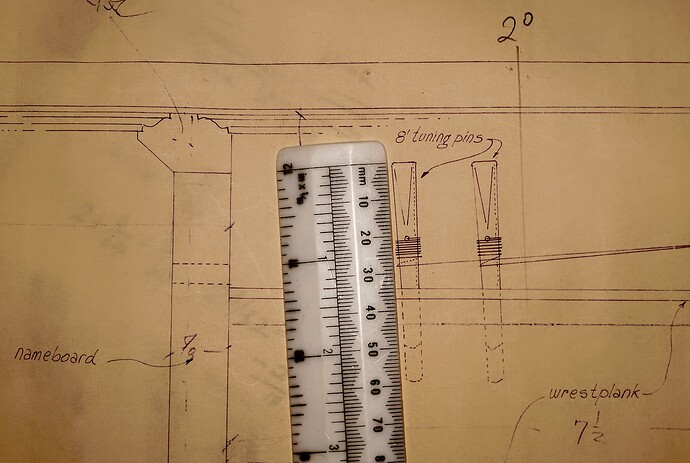Hi folks,
My 1999 ZHI Flemish XV single is due for its 25-year maintenance/partial rebuild. Below is what I have on the list of things planned, let me know if I am missing anything else important or worth doing with the instrument partially torn apart. For reference, I’m in Minnesota USA, which has about the least harpsichord-friendly climate on earth. I have a full power&hand tool woodshop, so tools and equipment aren’t an issue.
-
Strip and repaint. The original paint had a manufacturing defect and needs to be completely removed. I’ll likely prime with BIN shellac base, paint with BM Advance, and topcoat with General Finish High Performance Satin Topcoat. I’ve used this schedule on furniture and it seems to work well.
-
Remove the bottom and inspect the innards. Since it will be unstrung and have all the action removed, and I screwed the bottom on originally (glue would never have held on that long of a cross-grain joint in my climate) no reason not to pull it apart and check on things. Is it worth being wild and crazy and giving the underside of the soundboard a hide glue sizing? I have the hide glue on hand.
-
Repair the Flemish papers and some of the other decorative items. General cleaning of the instrument. Tidy up the keyboard.
-
Other minor repairs. E.g. stripped screw holes, dings in the wood, etc. Skow hooks to make it playable in the winter and summer would be great too. Either that or I need to put jack screws in the bottom under the keyboard.
-
Restring. The strings are in rough condition, and I am starting to get slippages and breakages. Is it worth going to Rose Iron wire (or Vogel Westphalian iron), or is the difference to current ZHI Iron negligible? I need to order new spools of wire either way. I like the ZHI brass, so I’m planning on getting that. I won’t get to restringing for a few months, so wait time likely isn’t an issue. I have the stringing schedule from ZHI, which I’ll use unless someone has a better one for that instrument.
-
Replace the tuning pins. Some of the wrestplank holes have elongated over time—not sure if I didn’t drive the pins in far enough originally or something else, so I probably need slightly larger ones. Plus, I want pins with holes. The original tapered, hole-less pins were very smooth and a bugger to start the wire on. Yes, did get the hang of using them, and yes, they held strings for 25 years, but I still hate them. ZHI has tapered pins with holes that are 0.1 mm larger, and Vogel-Scheer as well, 0.4 mm bigger. I’ll try a sample of the ZHI ones to start. Worst case I put in blued zither pins. Even they are better than what I currently have.
-
Revoice. I’m planning on keeping the original Delrin jacks. They work just fine and I’m not good enough to notice the difference. I have plenty of spare tongues if need be. I may order some wood ones for the bass to see if they work a little better on the heavy strings, but likely only a dozen or so.
Anything else I am missing?
Unfortunately, I am not able to start the project for several months; I have 5 more windows to replace and 2 more walls to reside on my house first. At least that gives me time in case I need to order anything across the pond.
Thanks in advance!
